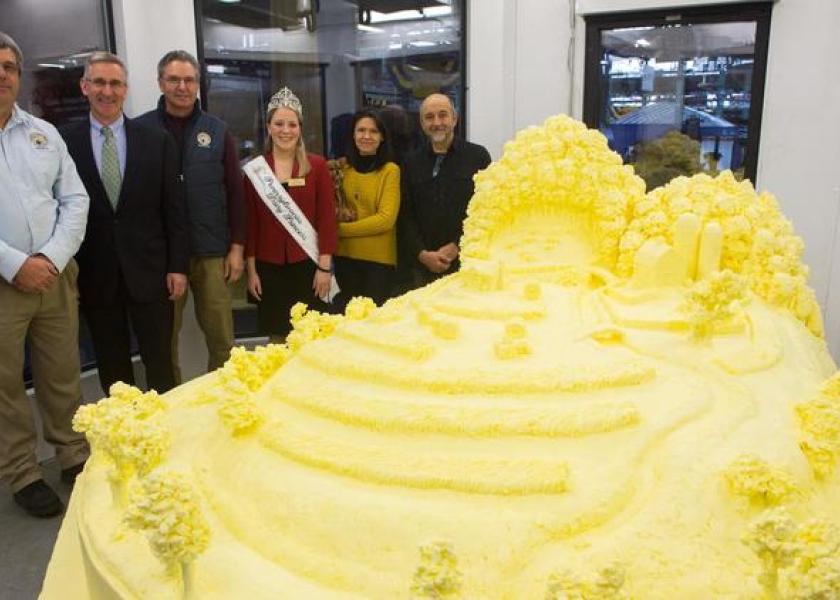Grassland Dairy and America's Love of Butter

Americans have renewed their love affair with butter, slathering it on corn, plopping pats in their coffee and even using it to mix cocktails.
The U.S. Department of Agriculture projected that 2017 consumption will rise 10 percent from a year earlier, hitting 940,000 metric tons, the highest in half a century. The nation will devour more than 2 billion pounds of butter this year, more than 6.1 pounds per person, and the resurgence has helped make Dallas Wuethrich a billionaire. His Grassland Dairy Products Inc., founded in 1904 by his grandfather John, who churned it by hand, now produces about one-third of the nation’s butter.
“I have a tendency to say ‘Hold it right there, we’re not that wealthy because it’s all in the business,”’ said his son Trevor Wuethrich, 43, president of the Greenwood, Wisconsin-based company. “We took our salaries, and if we did better than our salaries we stuck it right back into the business.”
Dallas Wuethrich, 71, has a $2.2 billion fortune, according to the Bloomberg Billionaires Index. He declined to comment on his net worth.
He joined the company in 1967 after attending the University of Wisconsin-River Falls for three years, according to a 1974 profile of Grassland in the Tribune Record Gleaner newspaper, when the firm was making 50,000 to 60,000 pounds of butter daily, about 1/30th of its production today.
Wuethrich eventually merged the family’s distribution and manufacturing businesses, and gobbled up other butter makers along the way. In 2005, Grassland purchased West Point Dairy Products LLC, which controlled about 10 percent of U.S. production at the time. Last year, he added specialty butter maker Alcam and its 1.5 percent market share. About one-third of Grassland butter is sold under its brands, while the rest is about evenly split between private label and bulk shipments to large bakeries.
Grassland gets 5 million pounds of milk daily from more than 850 dairy producers, according to the company, which has introduced rBST-free butters for consumers who oppose the use of bovine growth hormones in herds, as well as a butter made from cows fed a non-GMO diet.
Butter Up
The company’s growth has outpaced the burgeoning demand for butter, which is still far from its peak of more than 18 pounds per capita in the early 20th century. Revenue surged 46 percent over five years to $1.74 billion in 2016, according to annual sales estimates by Dairy Foods Magazine. The Bloomberg index values the business by comparing it with publicly traded dairy companies Saputo Inc., Parmalat SpA, Glanbia Plc and Fromageries Bel SA.
Butter’s rising popularity follows a decades-long consumption decline that began during World War II, when supply shortages prompted the use of margarine and oils as substitutes, according to the USDA. By the 1980s, Americans fearful of diets high in fat used about 4 pounds of butter a year on average, compared with 11 pounds of margarine. That began to change after the Food and Drug Administration determined that partially hydrogenated oils found in margarine were a health hazard. In 2005, for the first time in a half century, average U.S. butter consumption eclipsed margarine.
"Butter tastes a whole lot better," said Marion Nestle, a professor of nutrition, food studies and public health at New York University. "But it is still loaded with saturated fat, which raises heart disease risk in comparison to less saturated fats, and has 100 calories per tablespoon. If ever there were a call for moderation, butter would be high on the list."
For now, Americans continue to pile on the pats.







